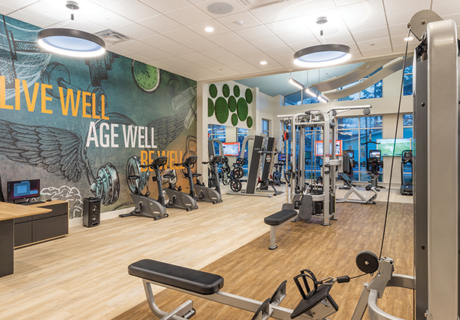Design Industry Can Help Meet Rising Demand For Senior Housing
 As more baby boomers enter their retirement years and the senior population continues to grow, the question arises: How much future senior housing inventory is needed to meet demographic demand?
As more baby boomers enter their retirement years and the senior population continues to grow, the question arises: How much future senior housing inventory is needed to meet demographic demand?
Recent data from the National Investment Center for Seniors Housing & Care (NIC) Map Vision, a research, data, and analytics provider, conclude that to meet current market penetration rates in the senior housing sector, substantial growth in housing inventory is needed.
Specifically, NIC estimates that nearly 200,000 senior housing units will be needed by 2025. That number jumps to an additional 549,000 units by 2028, followed by 806,000 more by the end of the decade.
Needed investment in senior housing
In a blog on the report, author Lisa McCracken, head of research and analytics at NIC, wrote that by 2030, “an industry-wide investment of $400 billion will be needed to complete the required new development to meet the anticipated demand.”
However, coupled with this growing demand is a decline in new construction starts, NIC reports. “Given the current pace of new development, it is estimated that only 40 percent of that investment need is currently on-pace to be fulfilled,” McCracken said.
Additionally, senior housing occupancy rates are on the rise, driven by record high demand. In fact, NIC anticipates occupancy levels to recover to pre-pandemic rates in the second half of 2024.
Supporting growth in senior housing sector
All these numbers signal big opportunities in the market as the need to accelerate efforts to develop and deliver more senior housing units persists.
There’s also increased demand for more affordable senior housing options as well as environments designed to address the higher care and acuity needs of older adults as they live longer.
On the latter, I’m comforted to know that this industry is already answering the call for innovation and fresh ideas. Look no further than Environments for Aging’s 2024 EFA Design Showcase for proof. (Check out EFA‘s spring issue for coverage of the 2024 Design Showcase.)
Here, you’ll find a diversity of projects that illustrate new approaches and strategies—from intergenerational environments to sustainable design initiatives and amenity spaces designed to support physical health and well-being—that project teams are bringing forth in response to the evolving needs and desires of today’s seniors.
Looking ahead, there’s more work to be done—and I’m confident that it’s in the right hands.



